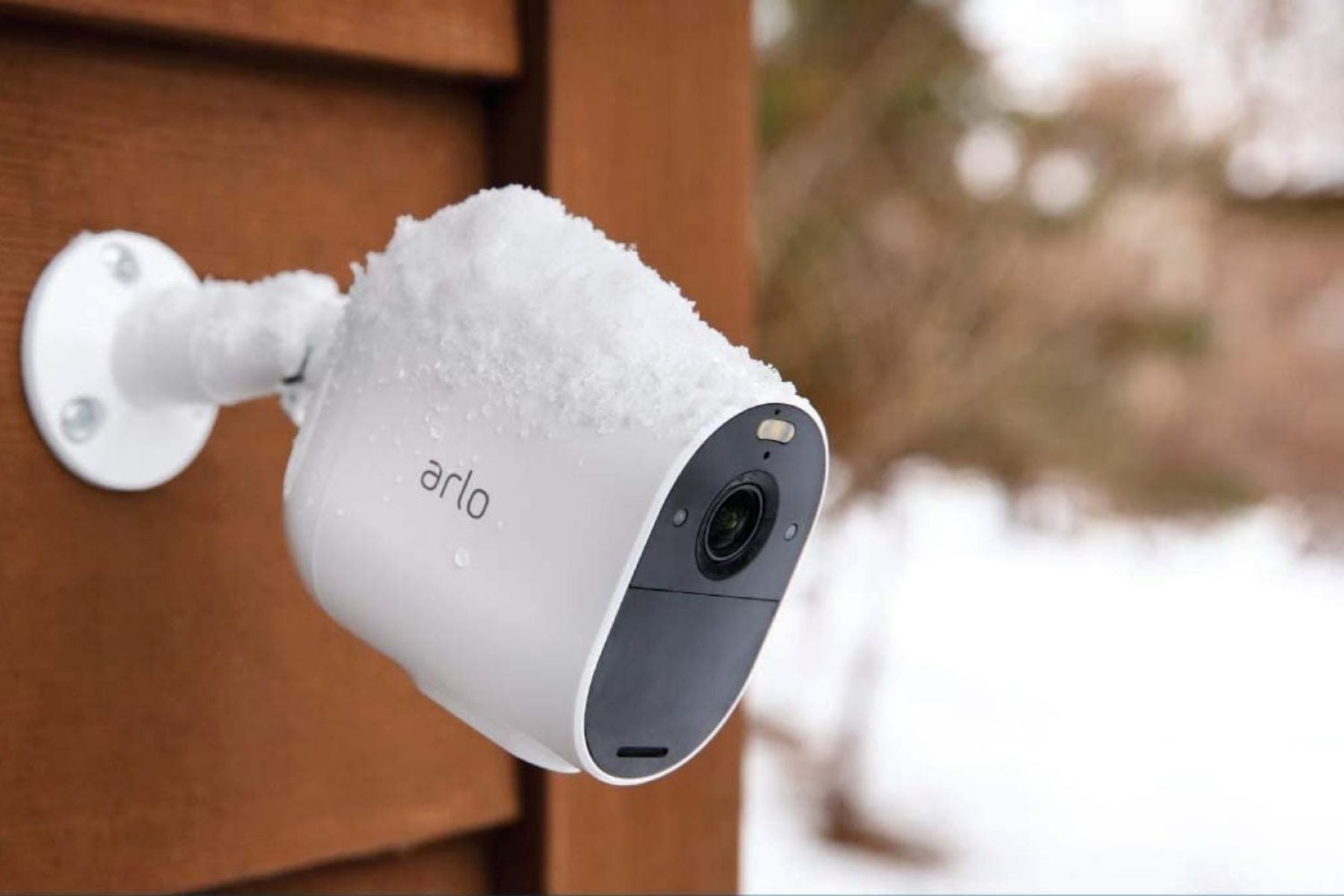Home>Furniture & Design>Outdoor Furniture>What Is An Important Factor In Determining Rates For Outdoor Advertising?


Outdoor Furniture
What Is An Important Factor In Determining Rates For Outdoor Advertising?
Modified: January 16, 2024
Find out the key factor influencing rates for outdoor advertising and how it impacts outdoor furniture, design, and placement. Learn more about outdoor advertising rates.
(Many of the links in this article redirect to a specific reviewed product. Your purchase of these products through affiliate links helps to generate commission for Storables.com, at no extra cost. Learn more)
Audience Reach
When it comes to determining rates for outdoor advertising, one of the most crucial factors is the audience reach. The effectiveness of an outdoor ad campaign heavily relies on how many people it can potentially reach. The broader the audience, the higher the potential for exposure and engagement.
The audience reach of outdoor advertising is influenced by various elements. The first and foremost consideration is the location of the ad. Placing an ad in a high-traffic area such as a bustling city center or a popular tourist destination significantly enhances its potential reach. This strategic placement ensures that a diverse array of individuals, including locals and visitors, will come across the ad.
Moreover, the demographic composition of the area plays a pivotal role in determining audience reach. For instance, an ad displayed in a location with a high concentration of young professionals will likely reach a different audience compared to an ad in a suburban area with more families and retirees. Understanding the demographics of the area is essential for tailoring the ad content to resonate with the target audience.
Additionally, the visibility and prominence of the ad structure contribute to its audience reach. Larger, eye-catching billboards positioned at vantage points along highways or near popular landmarks have a greater potential to capture the attention of passersby, thereby maximizing audience reach.
In the digital era, technological advancements have further expanded the audience reach of outdoor advertising. The integration of digital screens and interactive features in outdoor ad displays has transformed static ads into dynamic, attention-grabbing experiences. These modern innovations not only attract more viewers but also enable advertisers to customize content based on real-time data, thereby optimizing audience reach.
Furthermore, the time of day and day of the week are critical factors that influence audience reach. Understanding peak traffic hours and the behavioral patterns of the target audience allows advertisers to strategically schedule ad displays for maximum impact.
In essence, audience reach serves as the cornerstone of outdoor advertising rates. The broader the potential audience and the more effectively it aligns with the advertiser's target demographic, the more valuable the ad space becomes. By meticulously evaluating and harnessing the factors that contribute to audience reach, advertisers can optimize the effectiveness of their outdoor ad campaigns while ensuring a favorable return on investment.
Key Takeaways:
- Audience reach is crucial for outdoor advertising rates. Location, demographics, visibility, and technology all impact how many people an ad can reach, making it more valuable to advertisers.
- The size, format, and duration of outdoor ads also influence their rates. Large formats command attention, while short-term placements create urgency. Understanding these factors helps advertisers maximize their impact.
Read more: What Is Outdoor Advertising?
Location
Location is a pivotal factor in determining the rates for outdoor advertising. The placement of an outdoor ad significantly influences its visibility, audience reach, and overall impact. A prime location can elevate the success of an ad campaign, making it a highly sought-after and valuable asset for advertisers.
One of the primary considerations in evaluating the potential of a location for outdoor advertising is the foot traffic or vehicular traffic in the area. High-traffic locations, such as busy urban intersections, popular shopping districts, and transportation hubs, offer unparalleled exposure to a diverse and extensive audience. These areas are prime real estate for advertisers seeking maximum visibility and brand exposure.
Moreover, the demographic profile of the area plays a pivotal role in determining the suitability of a location for outdoor advertising. Understanding the characteristics and preferences of the local population enables advertisers to tailor their messaging to resonate with the target audience. For example, an ad promoting trendy fashion accessories may be more effective in a youthful, fashion-forward neighborhood, while an ad for family-friendly products may find greater success in residential areas with a high concentration of families.
The surrounding environment and infrastructure also impact the effectiveness of outdoor advertising. A visually appealing backdrop or an iconic landmark can enhance the visual impact of an ad, making it more memorable to passersby. Additionally, the presence of complementary businesses and amenities can create synergy, allowing advertisers to capitalize on the existing foot traffic and consumer behavior in the area.
Furthermore, the competitive landscape in the vicinity plays a significant role in determining the value of a location for outdoor advertising. Areas with high demand for ad space due to the presence of numerous businesses and attractions may command higher rates, reflecting the intense competition for visibility and consumer attention.
In the digital age, advancements in geotargeting and location-based advertising technologies have further amplified the importance of location in outdoor advertising. Advertisers can leverage data-driven insights to identify optimal locations for reaching their target audience, ensuring that their ad placements are strategic and impactful.
Ultimately, the location of an outdoor ad is a critical determinant of its effectiveness and, consequently, its value in the advertising market. By carefully assessing the foot traffic, demographics, environment, competition, and technological opportunities associated with a location, advertisers can make informed decisions to maximize the impact of their outdoor ad campaigns.
Size and Format
When it comes to outdoor advertising, the size and format of an ad play a pivotal role in capturing attention, conveying the intended message, and ultimately influencing the rates associated with the ad space. The visual impact and versatility of different sizes and formats contribute to the overall effectiveness and value of outdoor advertising.
Large-format ads, such as billboards and building wraps, command attention due to their expansive size and prominent placement. These larger-than-life displays have the capacity to captivate audiences from a distance, making them ideal for conveying brand awareness and delivering impactful visual messages. The commanding presence of large-format ads often translates to higher rates, reflecting their unparalleled visibility and potential to leave a lasting impression on viewers.
On the other hand, smaller formats, including bus stop shelters, kiosks, and street furniture ads, offer targeted exposure in specific locations, providing a more intimate and localized engagement with the audience. Their strategic placement in high-traffic areas allows advertisers to reach consumers in close proximity, making them an effective choice for localized marketing campaigns. While these smaller formats may have lower rates compared to their larger counterparts, they offer a niche appeal and targeted reach that can be invaluable for certain advertising objectives.
Furthermore, the format of an outdoor ad, whether static or digital, significantly influences its visual appeal and engagement potential. Static ads, traditionally printed on paper or vinyl, offer a timeless and reliable means of conveying messages. Their durability and ability to withstand various weather conditions make them a popular choice for long-term campaigns. On the other hand, digital ads, featuring LED screens and dynamic content, provide a modern and interactive platform for advertisers to deliver dynamic, real-time content. The flexibility and interactivity of digital formats often command higher rates, reflecting the cutting-edge technology and enhanced engagement they offer.
Moreover, the creative design and layout of the ad, regardless of its size and format, play a crucial role in capturing attention and communicating the intended message. A well-crafted ad with compelling visuals, concise messaging, and impactful branding can significantly enhance the effectiveness of the ad, thereby influencing its value and the associated rates.
In essence, the size and format of outdoor advertising not only dictate its visual impact and engagement potential but also influence its perceived value in the advertising market. By carefully considering the objectives of the ad campaign, the target audience, and the desired level of exposure, advertisers can strategically select the optimal size and format to maximize the impact of their outdoor ad placements.
Consider the location and visibility of the outdoor advertising space. High-traffic areas and prime visibility will command higher rates.
Duration
When determining rates for outdoor advertising, the duration of the ad placement is a crucial factor that significantly influences the overall cost and effectiveness of the campaign. The duration, or the length of time the ad will be displayed, plays a pivotal role in shaping the impact and reach of the advertising message.
Short-term ad placements, typically ranging from a few days to a few weeks, offer a burst of visibility and exposure within a concentrated timeframe. These short-duration placements are often favored for promoting time-sensitive events, limited-time offers, or seasonal campaigns. While short-term placements may command lower rates compared to long-term commitments, they provide a targeted and immediate impact, making them an effective choice for creating urgency and driving immediate consumer action.
On the other hand, long-term ad placements, spanning several months or even years, offer sustained and consistent visibility, allowing for prolonged brand exposure and message reinforcement. Long-term campaigns are well-suited for building brand recognition, maintaining top-of-mind awareness, and establishing a strong presence in the minds of consumers. The extended duration of these placements often translates to higher rates, reflecting the enduring impact and continuous visibility they offer.
Moreover, the duration of the ad placement directly affects the frequency of exposure to the target audience. Short-term placements may rely on high-frequency, high-impact strategies to maximize visibility within a limited timeframe, while long-term placements leverage consistent, repeated exposure to gradually influence consumer behavior and brand perception over time.
Furthermore, the seasonality and timing of the ad campaign play a critical role in determining the optimal duration of the placement. For instance, a summer-themed ad may benefit from a longer duration during the warm months to align with consumer behavior and seasonal trends, while a holiday-specific ad may require a shorter but intensive burst of exposure to coincide with peak shopping periods.
Additionally, the duration of the ad placement directly impacts the cost-effectiveness and return on investment for advertisers. Evaluating the desired campaign objectives, the target audience’s behavior, and the competitive landscape enables advertisers to strategically determine the optimal duration that aligns with their marketing goals and budget allocation.
In essence, the duration of an outdoor ad placement is a pivotal consideration that balances the immediate impact of short-term visibility with the enduring influence of long-term exposure. By carefully assessing the campaign objectives, consumer behavior, and market dynamics, advertisers can strategically leverage the duration of ad placements to maximize the effectiveness and value of their outdoor advertising initiatives.
Competition
When it comes to outdoor advertising, the competitive landscape in a given location plays a significant role in determining the rates and overall effectiveness of ad placements. The presence of competing ads, whether from similar or complementary businesses, influences the visibility, impact, and strategic value of outdoor advertising initiatives.
One of the key considerations in evaluating the impact of competition on outdoor advertising rates is the clutter or saturation of ad space in a specific area. High-density locations with a multitude of ads vying for attention may experience diminished visibility and reduced impact for individual placements. In such competitive environments, securing prime ad space and standing out from the crowd becomes increasingly challenging, often leading to higher rates for premium, strategically positioned ad placements.
Moreover, the nature of the competition, including the types of businesses and products being advertised in the vicinity, directly influences the strategic value of outdoor ad placements. In some cases, complementary businesses may strategically co-locate their ads to create synergy and capitalize on shared consumer demographics and behaviors. For example, a cluster of outdoor ads featuring dining options in a popular entertainment district may collectively enhance the overall dining experience and drive foot traffic to the area, creating a mutually beneficial competitive environment.
Conversely, direct competition between similar businesses in close proximity may intensify the battle for visibility and consumer attention. In highly competitive sectors, such as retail or hospitality, the rates for outdoor ad placements may be influenced by the demand for prime locations and the need to outshine rival ads. Advertisers seeking to gain a competitive edge in such environments may need to strategically invest in premium placements and impactful creative executions to stand out and capture audience attention.
Furthermore, the creative and messaging strategies employed by competing ads significantly impact the overall effectiveness and value of outdoor advertising. Advertisers must consider the visual distinctiveness, messaging clarity, and brand positioning of their ads to ensure they resonate with the target audience and effectively differentiate themselves from competing messages in the outdoor environment.
In the digital age, the competition for consumer attention extends beyond traditional outdoor ads to encompass digital and mobile advertising platforms. The integration of digital screens, interactive displays, and location-based targeting further intensifies the competitive landscape, as advertisers seek to leverage innovative technologies and dynamic content to capture audience engagement.
Ultimately, understanding and navigating the competitive dynamics in outdoor advertising locations is essential for advertisers to strategically position their ad placements, optimize their messaging, and maximize the impact of their campaigns. By carefully evaluating the competitive landscape and leveraging creative and strategic advantages, advertisers can effectively navigate the complexities of competition and drive successful outdoor advertising initiatives.
Read more: How To Use Outdoor Advertising
Seasonality
Seasonality is a critical factor that significantly influences the rates and effectiveness of outdoor advertising. The cyclical patterns of consumer behavior, cultural events, and weather-related activities create distinct opportunities and challenges for advertisers seeking to leverage outdoor ad placements to engage with their target audience.
One of the key considerations in assessing the impact of seasonality on outdoor advertising rates is the fluctuating demand for ad space during different times of the year. Seasonal peaks, such as major holidays, festive celebrations, or peak travel seasons, often drive heightened demand for outdoor ad placements, leading to increased rates as advertisers compete for visibility during these high-impact periods.
Moreover, the seasonal relevance of ad content and messaging directly influences the strategic value and impact of outdoor ad placements. Advertisers can capitalize on seasonal themes, such as summer promotions, back-to-school campaigns, or winter holiday specials, to align their messaging with consumer sentiments and activities during specific times of the year. The contextual relevance of seasonal ads enhances their effectiveness and justifies higher rates, as they resonate with the prevailing consumer mindset and lifestyle trends.
Additionally, the impact of weather-related seasonality on outdoor advertising cannot be overlooked. Advertisers may need to consider the durability of ad materials, the visual appeal of ad content in different weather conditions, and the potential for weather-related disruptions when planning outdoor ad placements. Seasonal variations in weather patterns may influence the rates for ad space, particularly in regions prone to extreme weather events or seasonal fluctuations in outdoor activities.
Furthermore, cultural and regional events, such as local festivals, sports tournaments, or community celebrations, create opportunities for advertisers to align their outdoor ad placements with specific cultural moments and communal activities. The strategic timing and thematic relevance of ads during these seasonal events can elevate their impact and justify premium rates, as they become an integral part of the collective experience and cultural fabric of the community.
In the digital era, the seasonality of outdoor advertising extends to the realm of dynamic, real-time content delivery. Advertisers can leverage digital screens and interactive displays to tailor ad content based on current weather conditions, local events, and seasonal trends, creating personalized and contextually relevant experiences for the audience. This dynamic approach to seasonality enhances the engagement potential of outdoor ads and may influence the rates for digital ad placements.
Ultimately, understanding and harnessing the influence of seasonality on outdoor advertising rates and effectiveness is essential for advertisers to strategically plan their ad placements, align their messaging with seasonal themes, and capitalize on the unique opportunities presented by different times of the year. By leveraging the power of seasonality, advertisers can optimize the impact of their outdoor ad campaigns and effectively connect with their target audience in meaningful and relevant ways.
Frequently Asked Questions about What Is An Important Factor In Determining Rates For Outdoor Advertising?
Was this page helpful?
At Storables.com, we guarantee accurate and reliable information. Our content, validated by Expert Board Contributors, is crafted following stringent Editorial Policies. We're committed to providing you with well-researched, expert-backed insights for all your informational needs.















0 thoughts on “What Is An Important Factor In Determining Rates For Outdoor Advertising?”